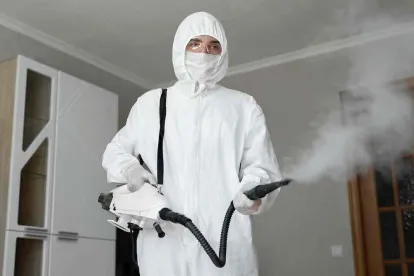The Institut de recherche Robert-Sauvé en santé et en sécurité du travail (IRSST) announced on August 9, 2021, publication of a study entitled Characterization of Unintentionally Released Nanometric Particles in Various Workplaces. The study characterizes unintentionally released nanoparticles (URNP) found in six workplaces — an underground mine, a truck repair shop, an underground transportation network, a foundry, a machine shop, and a wax casting shop — on the basis of a broad range of indicators. IRSST assessed concentrations according to numerical and mass metrics, using an array of direct reading instruments. IRSST also took time-averaged measurements, based on the type of contaminant specific to each workplace. In parallel, IRSST took measurements for microscopy characterization in the same six workplaces. According to IRSST, workers exposed to diesel exhaust fumes (an underground mine, truck repair shop, and underground transportation network) “are exposed to mostly nanometric-size airborne particles whose mass concentration is largely in the submicron fraction.” In the presence of foundry fumes, IRSST states that “workers are exposed to airborne particles that are mostly nanometric in size and whose mass concentration is chiefly in the submicron fraction for chromium, cobalt, copper, iron, manganese, lead, vanadium and zinc.” The workers in the machine shop are exposed to fumes and dust particles from machining, most of which are nanometric in size, but IRSST notes that “some of the processes they use generate larger, micrometric particles. The contribution of larger particles to the mass concentration is significant in this environment and, as a result, the mass concentration is to be found in the inhalable fraction, especially for chromium, copper, iron and nickel.” Workers in the wax shop are exposed to fumes that are chiefly nanometric in size and whose mass concentration is mostly in the submicron fraction. IRSST states that its “innovative strategy” enabled it to characterize the URNPs released in the different workplaces with respect to both numerical and mass concentrations. IRSST used microscopy studies on particle samples from the microscope grid taken with a Mini Particle Sampler® to characterize the particles collected based on their morphology and chemical composition.
IRSST Publishes Study on Characterization of Unintentionally Released Nanometric Particles in Various Workplaces
Tuesday, September 14, 2021
Current Public Notices
Published: 3 September, 2025
Published: 28 August, 2025
Published: 25 August, 2025
Published: 25 August, 2025
Published: 25 August, 2025
Published: 25 August, 2025
Published: 22 August, 2025
Published: 20 August, 2025
Published: 20 August, 2025
Published: 18 August, 2025
Published: 18 August, 2025
Published: 14 August, 2025
Published: 11 August, 2025
Published: 8 August, 2025
Published: 26 June, 2025




 />i
/>i

